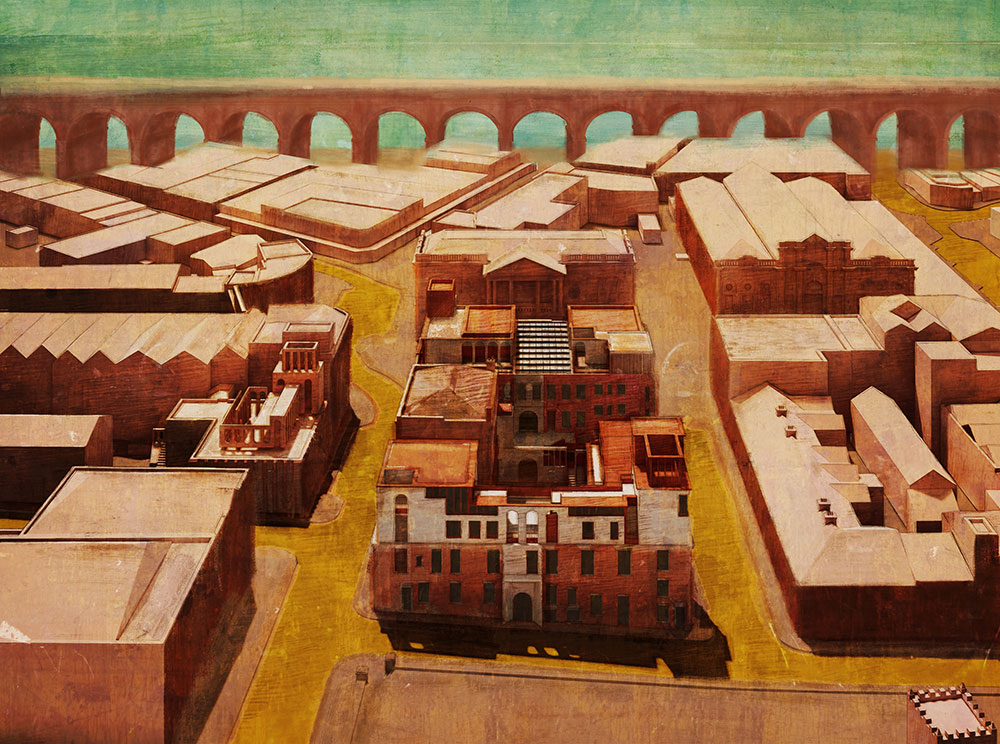Quotidian Adventures
Continuity in Architecture is founded on a conviction that the architect needs to become a specialist in understanding cities, their evolution, and the way they embody, express, and facilitate social life. This means they need to know how to interpret the persistent features of culture expressed through existing architecture and built form. We encourage students to investigate theories such as contextualism, critical regionalism, and new urbanism to synthesise an appropriate design response. Our aim is to foster an appreciation of the work of a settlement’s forbears and give it due consideration in a rapidly changing future.
Innovations in our teaching are informed by our research work spanning three research fields across the teaching team. These teaching ‘strands’ are city centre regeneration, small settlements, and adaptive reuse/heritage.
The CIA Atelier offers a mixed diet of inputs, formats and content, some combined across the vertical atelier structure:
- Project partnership – teaching through collaboration with real-world partners.
- Peer-to-peer – teaching in student-led seminars on building case studies and foundational theoretical texts.
- Studio teaching – lectures given by atelier staff, teaching students about their research interests.
- Industry partnerships – teaching layout and detailing of buildings by architects experienced in current practice. Engagement with factory manufacturers to explore craft approaches.
Through the Professional Studies 1 programme, we explored architecture and technology, envelope and space, surface and detail not as the object of discrete design processes, but as a continuous, iterative, integrated discipline. Our conviction is that we need this craft as architects, and it is what we must become experts in. With theorist Edward Ford, we have observed how a 1:500 concept can imply a 1:5 detail, and conversely how a detail motif may inform the whole. Whether the best buildings from the past, or contemporary precedents we seek to emulate their tectonic rigour and delight.
With a brief entitled ‘The Two Century Home’ our intention was to take the long view of housing in the historic heart of Accrington, Lancashire. In a post-pandemic world questions of work-life correlation are brought to the fore. We became interested this year in what makes for ‘adaptable permanence’, that is, research into the architectural qualities that allow for change, but also offer some resistance, such that the home will last 200 years.
Following this focus on a given function: ‘House & Home’, the second project focused on a given form: ‘Building Reuse’. We began with a building and asked … ‘what does it want to be?’ Adaptive re-use subverts and challenges that old cliché ‘form follows function’. The pre-existence of form demands us to think about appropriate functions for the spaces we uncover.
We saw students derive inspiration from serious, profound conversations with an existing building – Old St James’s School in Accrington. The projects seek to communicate with the building’s makers, and with those generations that followed with their own adaptations. Students then engaged in altering, stripping, dropping, cutting, opening, lining and cladding the existing form, as it is repurposed for modern technical and functional requirements.
In MArch2 the three research strands come to the fore. Encounter & Exchange, Contentious Heritage and Settlement Chronologies offer complementary frameworks for research-by-design enquiry.
The Encounter and Exchange group located their research in Accrington, considering the revitalisation of commerce and culture in this northern settlement. Projects ranged from civic buildings such as museums and workshops to student accommodation to a repurposed shopping centre and more. A sensitive evaluation of the town’s architectural assets coupled with a provocative theoretical framing was expected.
The Contentious Heritage group investigated particularly charged urban artefacts that have a charged history by virtue of use, original intent, socio-economic changes, architectural content and more. Students engaged with critical theory texts to, as it were, psychoanalyse the pre-existing forms, and reconstruct and repurpose controversial memories.
Settlement Chronologies began with the framework of ‘Unbeeching’, asking whether reversing the 1960s Beeching Cuts to the UK rail infrastructure could provide a catalyst for small settlement revival. Students then developed projects that projected a future for rural living that was contextual, vibrant, and ecologically sustainable, as a viable alternative to dense city living.


